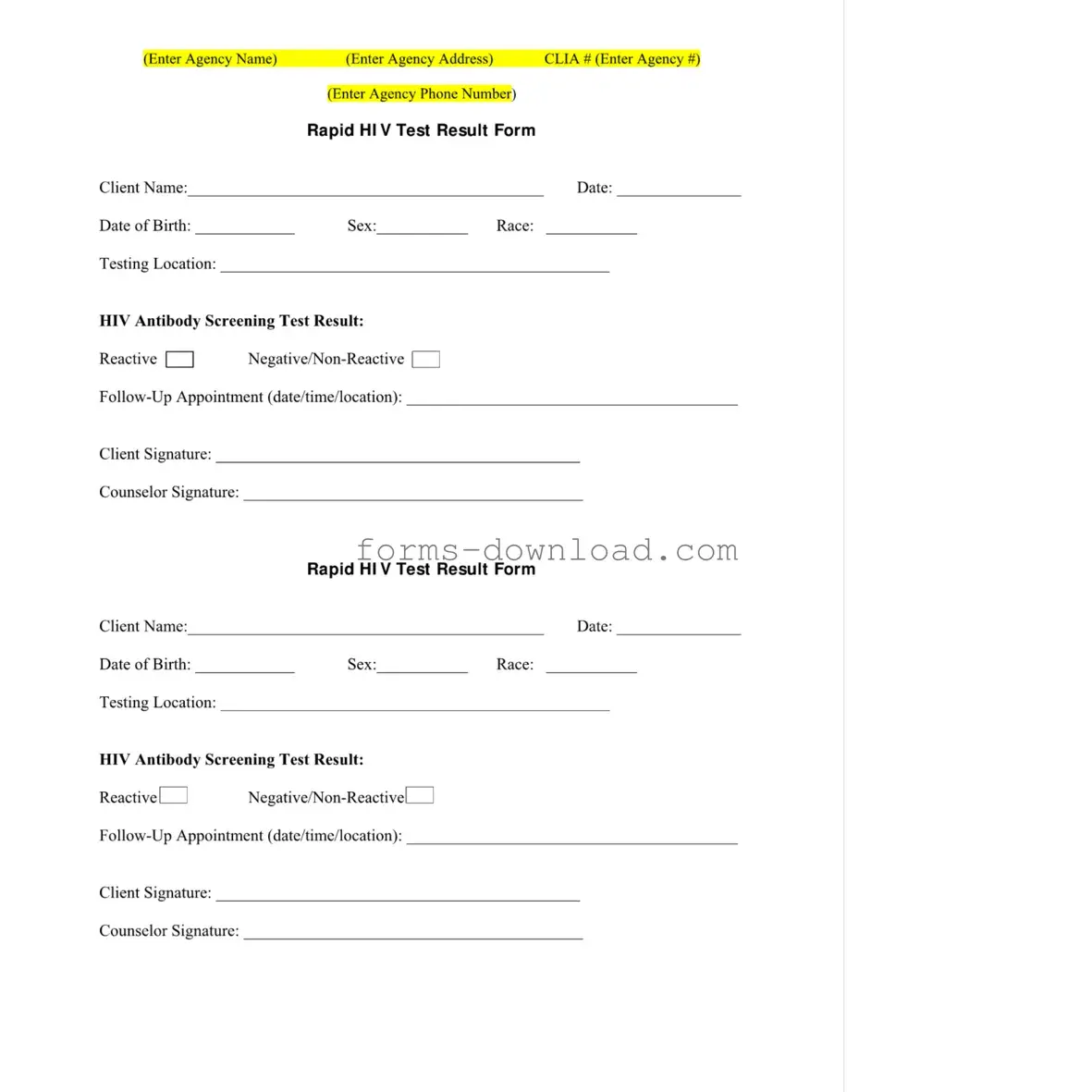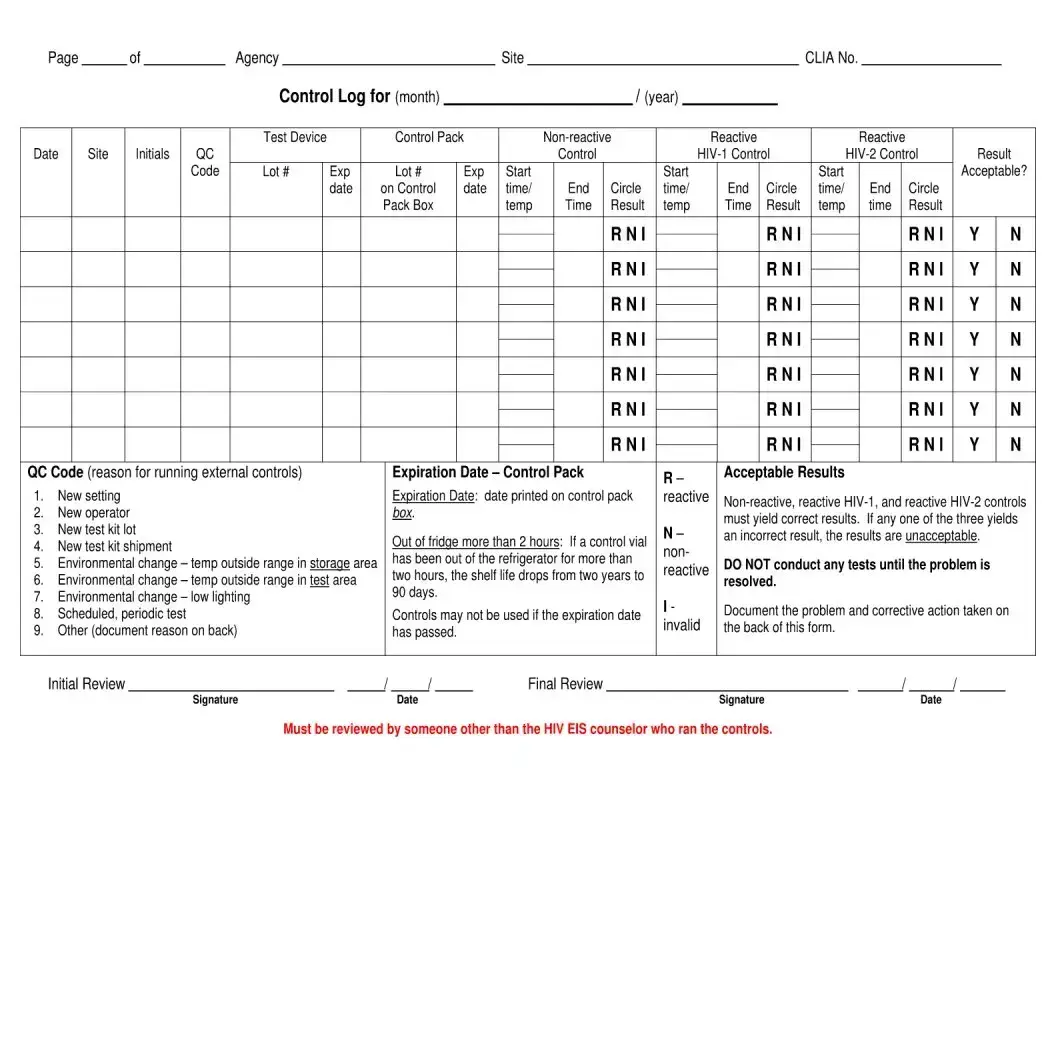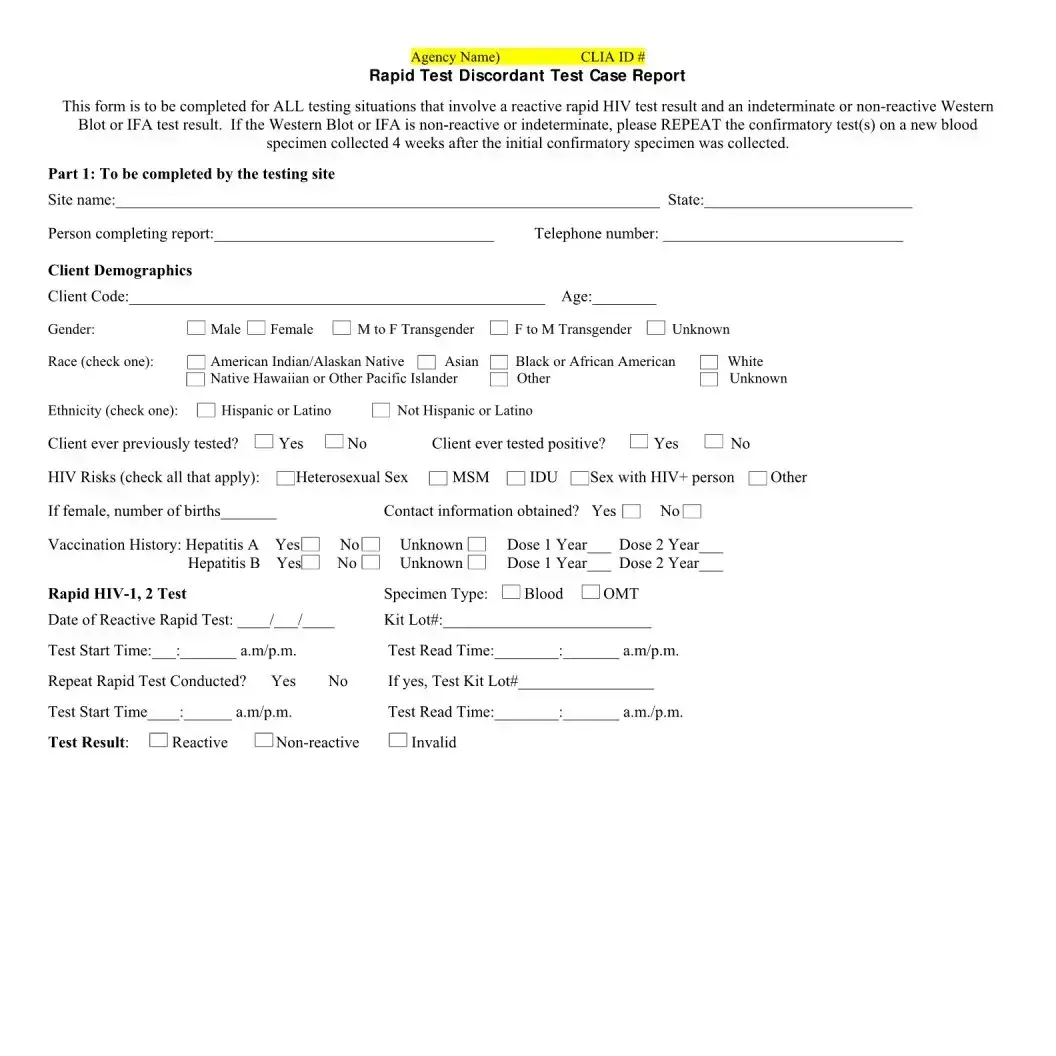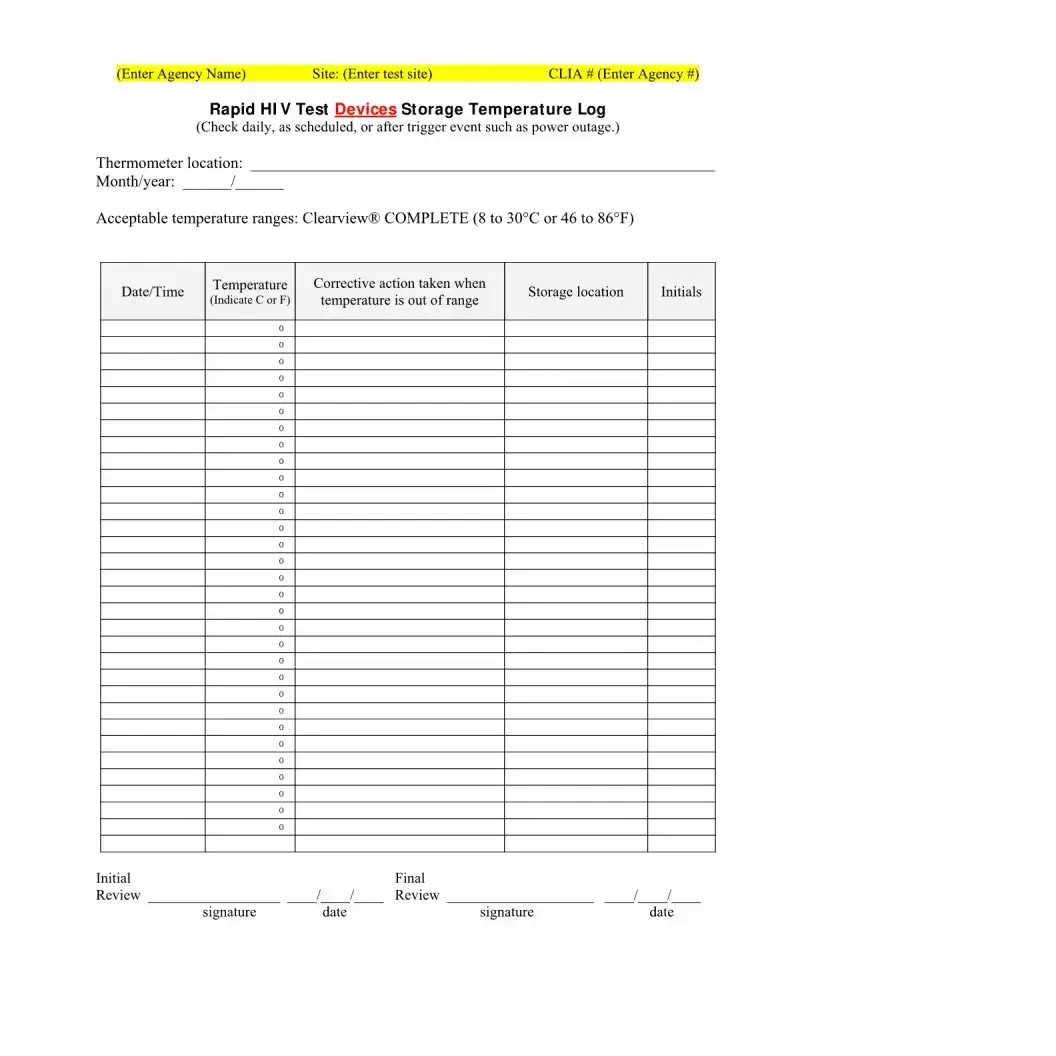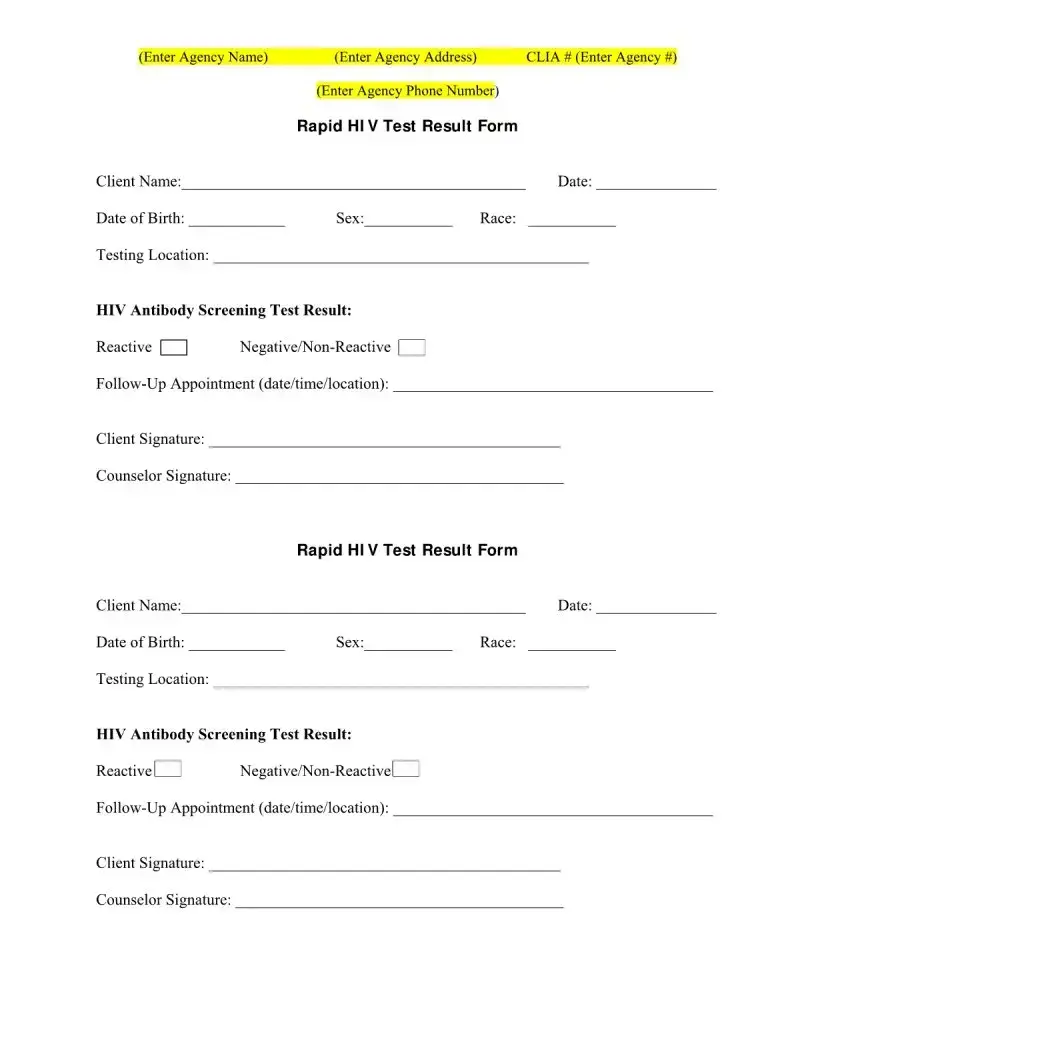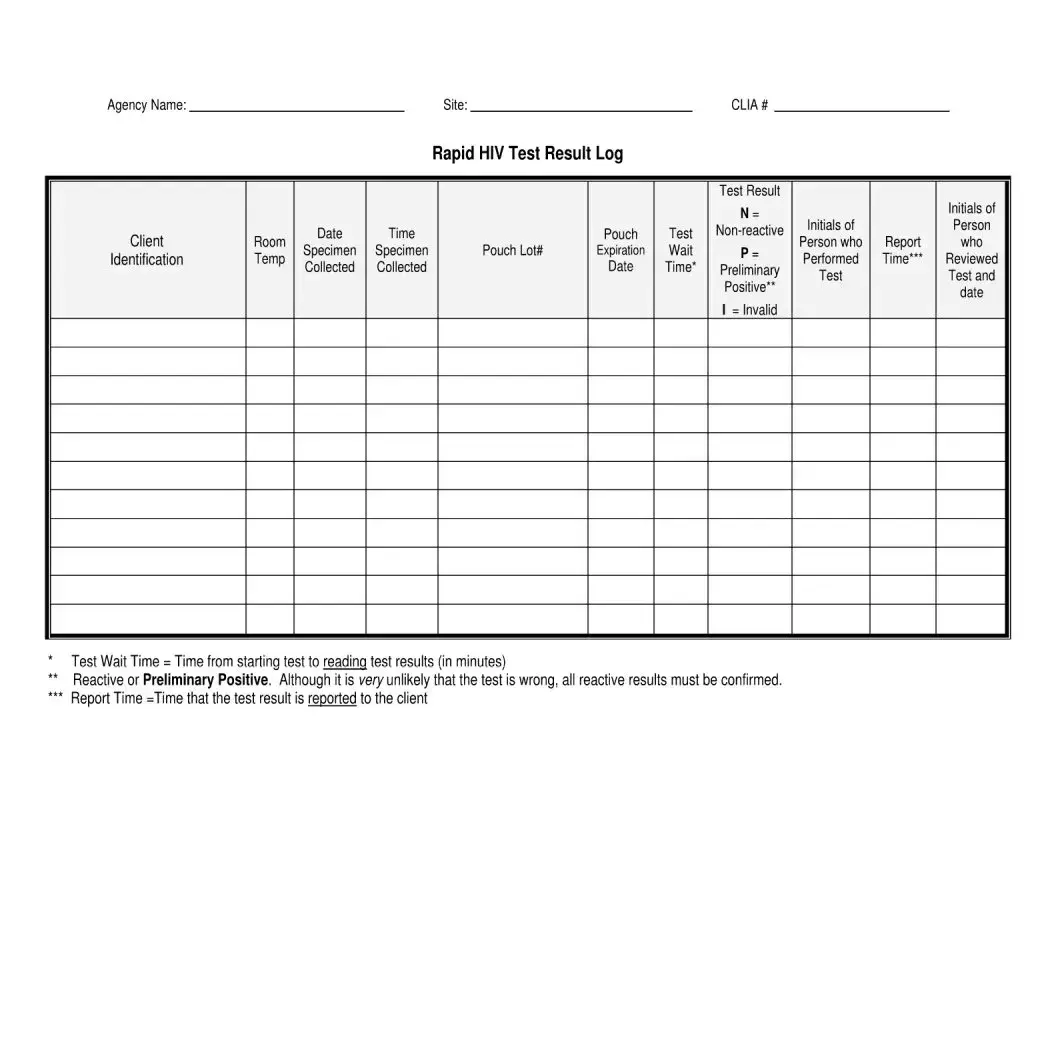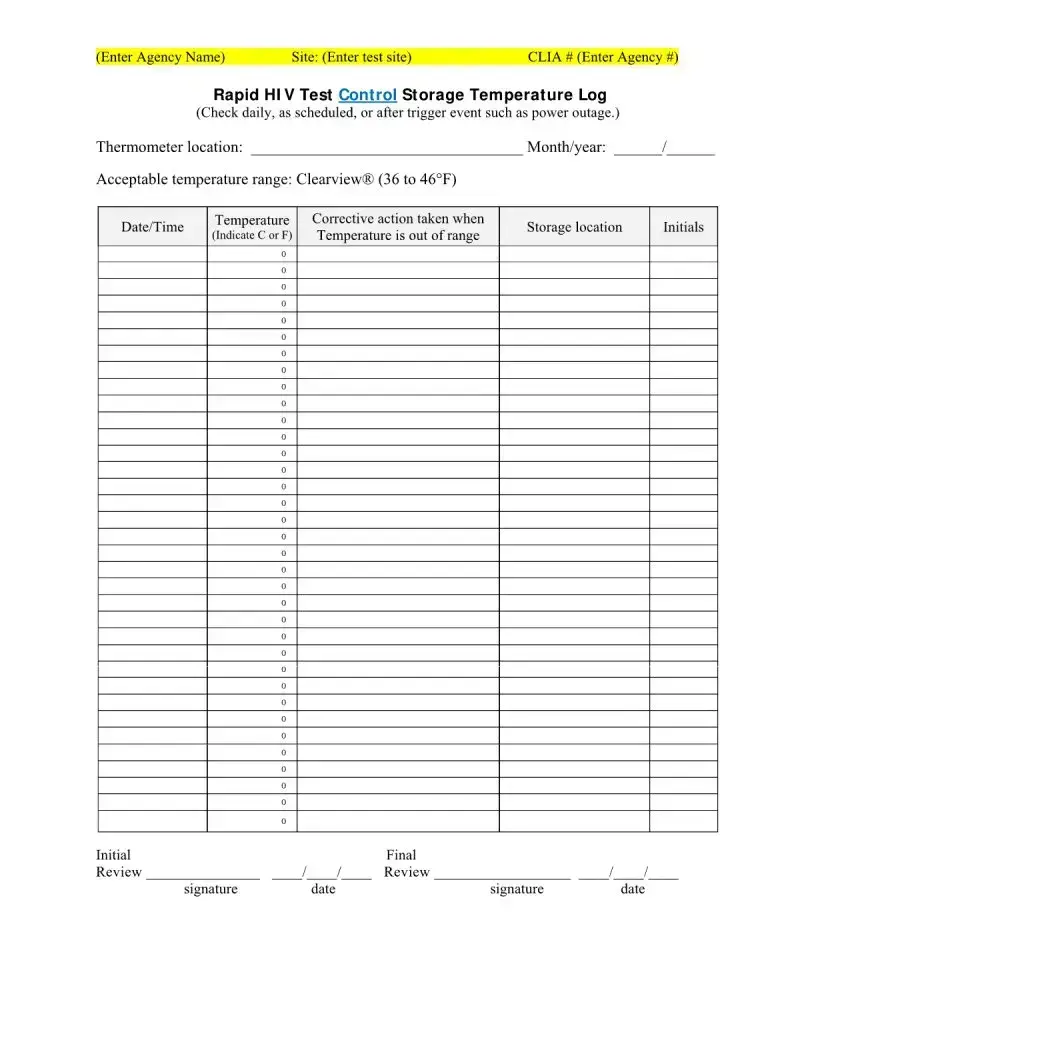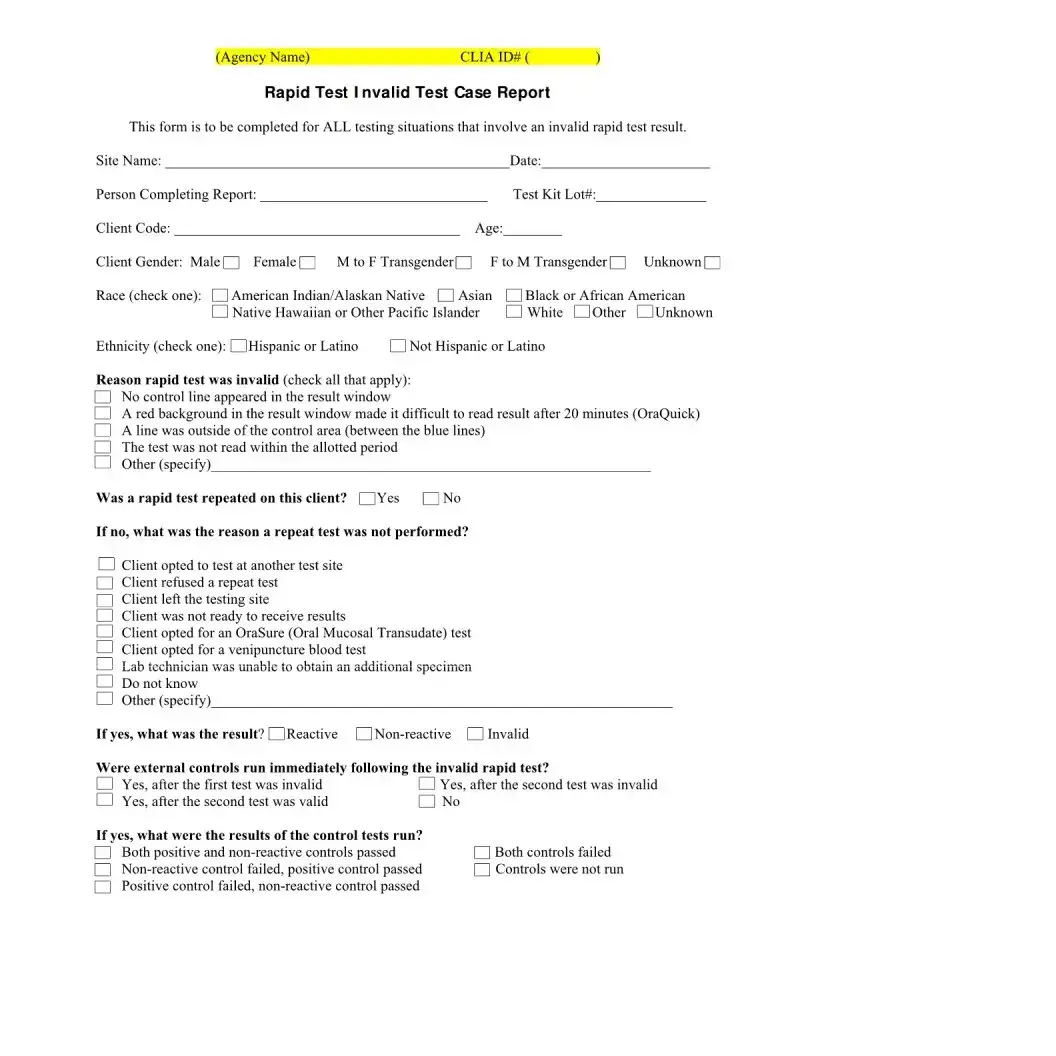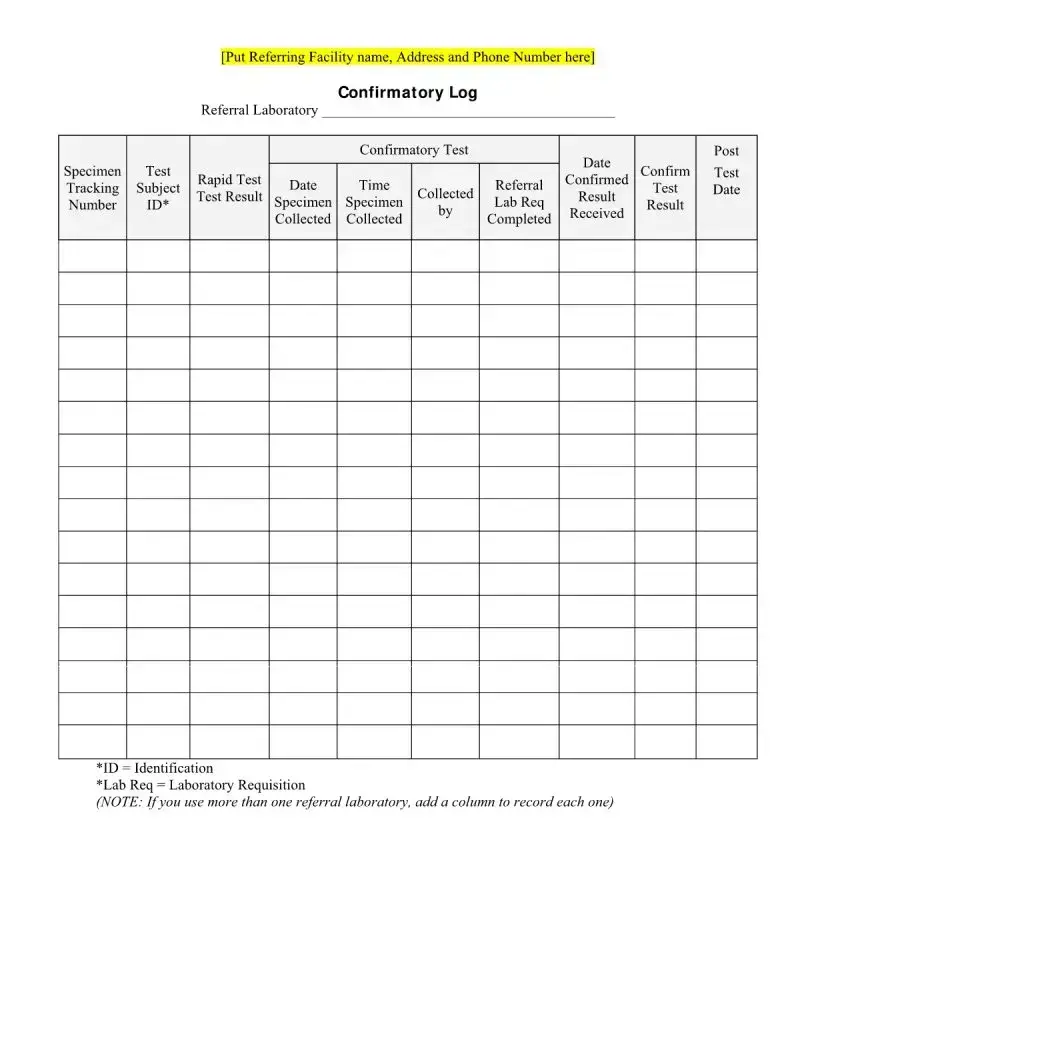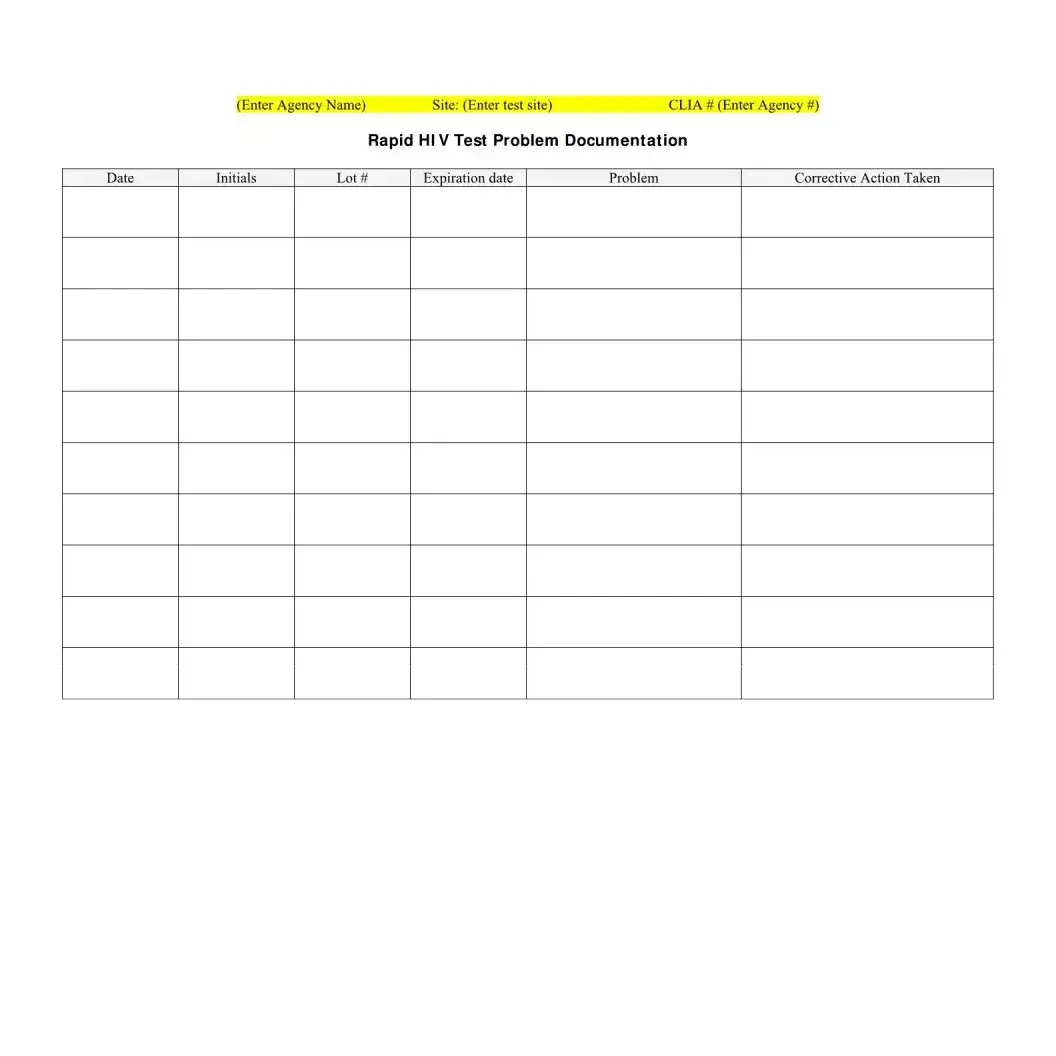The Negative HIV Test form is an essential document used in the process of HIV testing. It serves multiple purposes, including recording the client's personal information, test results, and follow-up appointments. Key details captured on the form include the client's name, date of birth, race, and testing location. The form also indicates the result of the HIV antibody screening, which can either be reactive or negative/non-reactive. Additionally, it provides space for both the client and counselor signatures, affirming the completion of the testing process. Agencies are required to maintain accurate records, including the storage temperature logs for rapid HIV test devices and controls, ensuring that tests are conducted under proper conditions. This form also includes a log for tracking test results, with specific details such as the date and time specimens were collected, pouch lot numbers, and expiration dates. By adhering to these protocols, agencies can ensure the reliability of test results and the safety of their clients.
